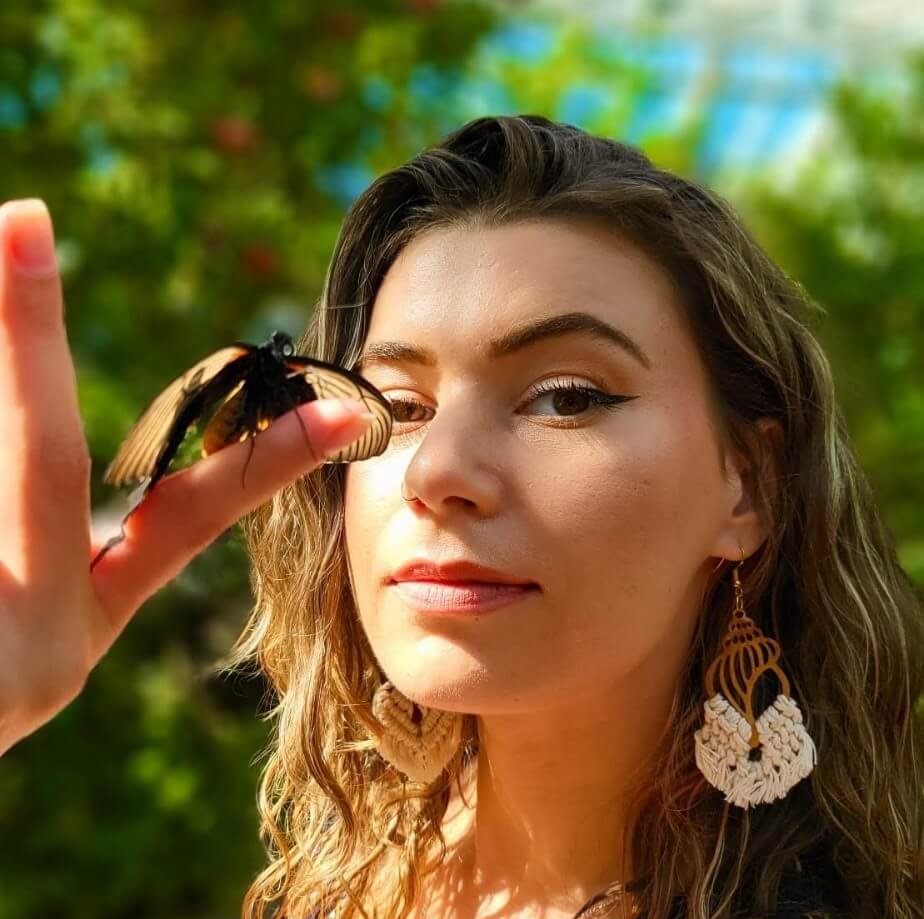
For the first time ever, COP27 – which took place in November 2022 – hosted a Children and Youth Pavilion to provide young people a space for congregation and deliberation of their crucial roles in the climate sphere. An objective of the Children and Youth Pavilion is to showcase the power of children and youth in their organizational ability as major stakeholders/actors/leaders, rather than just observers to the ever-changing policies of climate change.
One of the repeated questions we got as young researchers in attendance at COP27 was from other young people asking how to get involved in youth stakeholder groups in a way that would enable them to participate in the conversations, negotiations and networking opportunities that these types of conferences provide. We believe that with more robust accessibility of participation for children and youth at climate conferences, there is a paramount opportunity for positive change in climate negotiations that young people can meaningfully take part in.
The Children and Youth Pavilion is led by 14 youth-led entities including but not limited to the African Youth Division on Climate Change, UNICEF, UN Secretary General’s Youth Advisory Group, and YOUNGO, to name a few. A list of all programme partners can be found here. Through their organizational efforts, the Children and Youth Pavilion came alive at COP27. Given its crucial necessity, as well as its popularity, we hope it is here to stay.
As young researchers attending COP27, we were given a particular perspective on the impact of participation that the Children and Youth Pavilion provided. We were sent as student researchers under the nongovernmental organization Stakeholder Forum for a Sustainable Future, funded by the Belmont Forum, within the University of North Carolina’s UNC Water Institute as part of a team called Re-Energize DR3. Our work at COP27 was to gather a better understanding of the intersectionality between private, public, governmental and nongovernmental entities as it applies to policy in the sphere of vulnerability and disaster resiliency. While we were there, a recurring question we got from young people in attendance was about ways to further their participation and inclusion in future climate conferences and panel events. Here we want to highlight the importance of youth inclusion in the context of activism, stakeholder and negotiation processes, and highlight some ways for young people to get involved for future COP conferences.
Young people’s hard work and partnership with the UNFCCC led to a few powerful outcomes at COP27. The first notable impact was a Global Youth Statement (GYS) delivered to the Egyptian Presidency. The GYS was written entirely by young people and some of its recommendations were fully or partially adopted in the final decision document at COP27, a second success story. Articles 93-95 highlight the crucial role that young people play in global climate governance. Article 93 “Recognizes the role of children and youth as agents of change in addressing and responding to climate change and encourages Parties to include children and youth in their processes.” For greater transparency, Youth in the GYS recommend that countries be required to report the demographics – including age – of their delegations, although this was ultimately not adopted in the final text. The youth pavilion, highlighted earlier, was another nod to the importance of including young people at all levels.
Youth who are interested in getting involved in the international climate space have a multitude of options. Any young person under the age of 30 can join the global youth constituency (YOUNGO) officially recognized by the UNFCCC as a stakeholder group. More information on how to get involved in the network can be found here. YOUNGO has a broad mailing list for information sharing and monthly constituency calls for new members to get oriented. Each year YOUNGO is given a certain number of badges and funding to sponsor young people who would like to attend COP. These badges are allocated with priority given to those from vulnerable communities and those who meaningfully contribute to the network. Considerations include geographic location, working-group participation, gender and financial need.
Additional avenues include university-sponsored badges or early-career opportunities. Universities can apply to become accredited by the UNFCCC under the RINGO (Research and Independent NGOs) stakeholder group. RINGO produce information videos on how the UNFCCC operates which are available here. If your university is accredited, they will receive a determined number of badges each year to send staff, undergraduate and graduate students to the conference. Early careers with local or grassroots NGOs who are members of larger climate networks also receive badges to send members. Examples of such networks in the United States include U.S. Climate Action Network and Powershift Network. Many larger, multinational organizations, like Third World Network, World Wildlife Fund or ActionAid, are themselves accredited and can send staff to climate conferences through the badge process. A full list can of accredited organizations can be found here.
Although this list is not nearly exhaustive, these are a few great options for young people to begin participating in climate negotiations. These are the only options to find a sponsored badge, but attending a COP can be quite expensive. Most youth are full-time students or hold entry-level positions with a limited salary. As a result, young people often require sponsorship to cover travel, housing, visa support, and food or professional dress costs for COPs. Resource barriers can be restrict full participation in climate negotiations. Here, young people have called for country delegations, the internal UNFCCC system, and large climate organizations to increase funding to ensure that young voices have the opportunity to be integrated into global governance spaces.
Attending an international climate conference as a youth is costly and can create various accessibility challenges through travel restrictions and funding, but having a Children and Youth pavilion at COP27 is a step towards amplifying inclusion of this crucial stakeholder group. We hope that youth representation will increase with each annual COP event, and that this first-year representation will present new opportunities for youth attendance at COP28. We also hope that through the establishment of the children and youth stakeholder group, delegates and organizers will consider the current accessibility barriers to allow for greater inclusion of children and youth in all future climate negotiation processes.
Re-Energize DR3 is a nongovernmental research organization focused on the intersectionality of governance and policy in the context of disaster risk reduction and resilience.

Jamie Cummings, Research Assistant, UNC Re-Energize Disaster Risk Reduction and Resilience (DR3)
Jamie is a recent graduate of The University of North Carolina at Chapel Hill with a double major in Public Policy and International Politics and has previously interned with U.S. Climate Action Network, as well as conducting independent research on youth stakeholder engagement in the United Nations Framework Convention on Climate Change (UNFCCC).

Rene Marker-Katz, Associate Researcher with Re-Energize DR3
Rene Marker-Katz blends policy, planning, and disaster resiliency through a lens of research and storytelling. Her work aims to identify vulnerable groups within the context of disaster and find ways to strengthen them through an intersectional analysis on climate change. She is currently an Associate Researcher with Re-Energize DR3, funded through the Water Institute at UNC and the Belmont Forum. To see more of her work you can follow her on Instagram and LinkedIn.

Young Academies and Associations invitation to apply for ISC Membership
An invitation for eligible Young Academies and Associations to join the International Science Council as Affiliated Members
Image by Rory Arnold / No 10 Downing Street via Flickr.